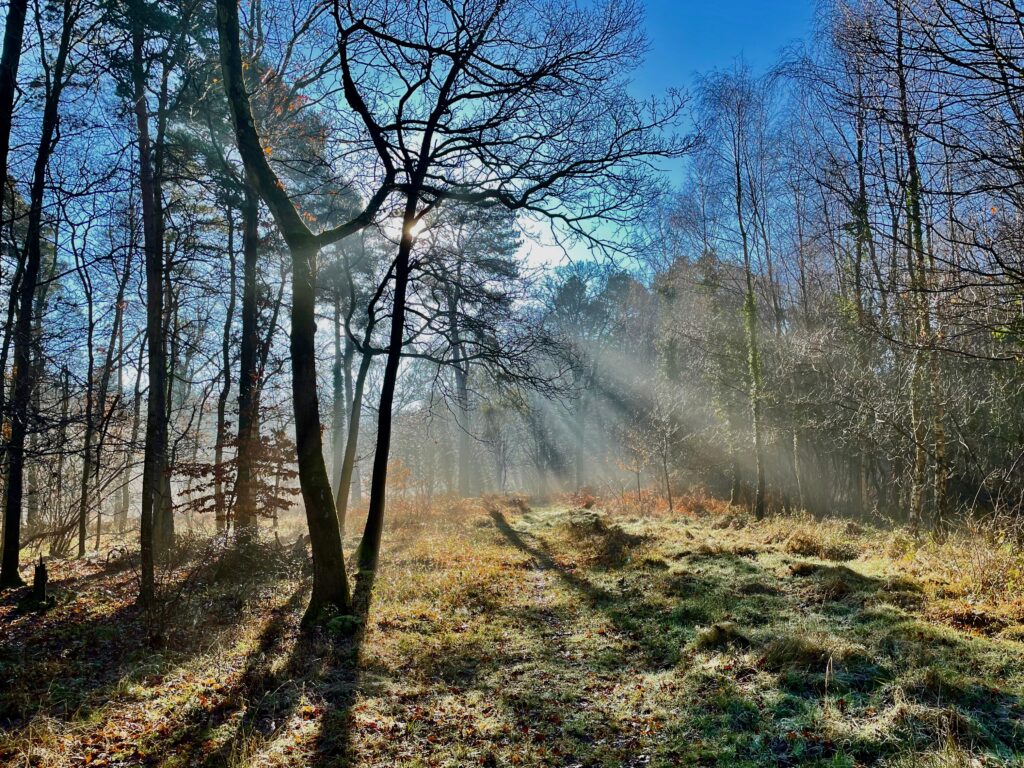A Beginner’s Guide to Forest Bathing using Your Senses
If you’ve heard of Forest Bathing but aren’t sure where to start, this beginner’s guide to Forest Bathing will help. Every session is different, and it can take more than one to truly benefit from all that it can offer for both physiological and mental health.
I know it can also be difficult for my participants to really feel like they have ‘switched off’. I do my utmost in all sessions and use a variety of techniques and invitations to facilitate this. But there are also some little things you can do alone, like slowing right down, being silent and using your five senses, to help you make a better connection with the natural world.
And if you can’t get to a forest, don’t fret, you can do variations of all Forest Bathing activities in your own garden or any safe, quiet, outdoor space. The outcome of all of these exercises is an increase in the measurable psychological construct of Nature Connectedness – and the more connected with nature we are, the happier and healthier we are.
🌿 Related: Learn more about Nature Connection
Start by Removing Distraction
Most aspects of improving health, such as eating better and upping exercise, are never quite as simple as they seem. For example, you have to work out what the best foods are for your body, learn an exercise technique or get into a new routine, schedule meals and workouts, etc.
Forest Bathing, however, really is as simple as it seems. Literally, all you need to do is go outside somewhere peaceful and pay attention to your surroundings.
The Digital Detox
That last point, however, is crucial and not as easy as it sounds. Dr Qing Li, a Physician and Immunologist at Nippon Medical School hospital in Tokyo, Japan, is the world’s foremost expert in forest medicine, has extensive experience in studying the effect of forest environments on human health and has published many scientific articles in Forest Medicine. He is certain that if you let technology interrupt your experience, you won’t get the most out of it. In other words, leave your phone at home or at least switch it to aeroplane mode, then stash it away.
Eliminate anything else that would prevent you from fully engaging in your surroundings. This includes any earphones or fitness trackers you might use. Forest bathing isn’t about accruing more steps, staying in a certain heart rate zone, or trying to make a workout of the experience in any way, shape, or form. It’s about simply being, and it should feel like radical relaxation.
If you have trouble tuning into nature, start thinking about what you’re seeing, hearing, and feeling around you—the rustling leaves in the trees above, the crunch of snow beneath your feet, the burbling of a nearby stream. It really is that simple. By taking each sense in turn, you can make the transition and create a deep connection to nature more easily.
Let’s look a little closer at that now with some practical examples in this beginner’s guide to Forest Bathing.

Using Your Senses as you Forest Bathe
Once you have enabled yourself to ‘let go’ of your attachment to your phone and other technology, you have a better chance of truly embracing all that nature has to offer. Therefore, to help you tune in, take each sense in turn, and spend at least 5 minutes focusing on each one.
Remember – you can deepen your nature connection anywhere, on the school run when noticing your neighbours’ gardens, listening to birds as you walk at the weekend or simply smelling the different leaves on trees and shrubs in the park. Lack of access to a forest isn’t a barrier to this incredible way of life.
Sight
Really focus on what you see. To help with this, actively look for different colours, one at a time. Look for greens, then yellows, then oranges, then reds. See their different shades in the plants, trees, leaves and on the ground around you. Examine the bark of a tree, watch the clouds in the sky above or find some moss to explore.
Smell
Get physically closer to the nature around you and inhale. If there are flowers, experience the different fragrances. Disturb some fallen leaves and see what you notice, in terms of smell. Pick up a stick or a little mud, and again take a big breath in through your nose. Take a moment and see if it creates a picture in your mind or brings back a memory. How do you feel? Many of my participants often tell me that the smell of mud, the earth and the soil, reminds them of their childhood. Think mud pies, big puddles and welly boots!
During a Forest Bathing session, I invite participants to get up close and personal with the soil on which they stand. Often smelling the earth causes people to exclaim in surprise: “it smells amazing!”
If you’d have said to me a few years ago that I’d be enjoying sniffing the earth, I’d have thought you were mad…but now I think the smell, known as petrichor, of damp topsoil from the forest (the humus layer), is superb just after wet weather.
My challenge to you – grab a princh of damp earth or moss next time you’re out – and inhale deeply.
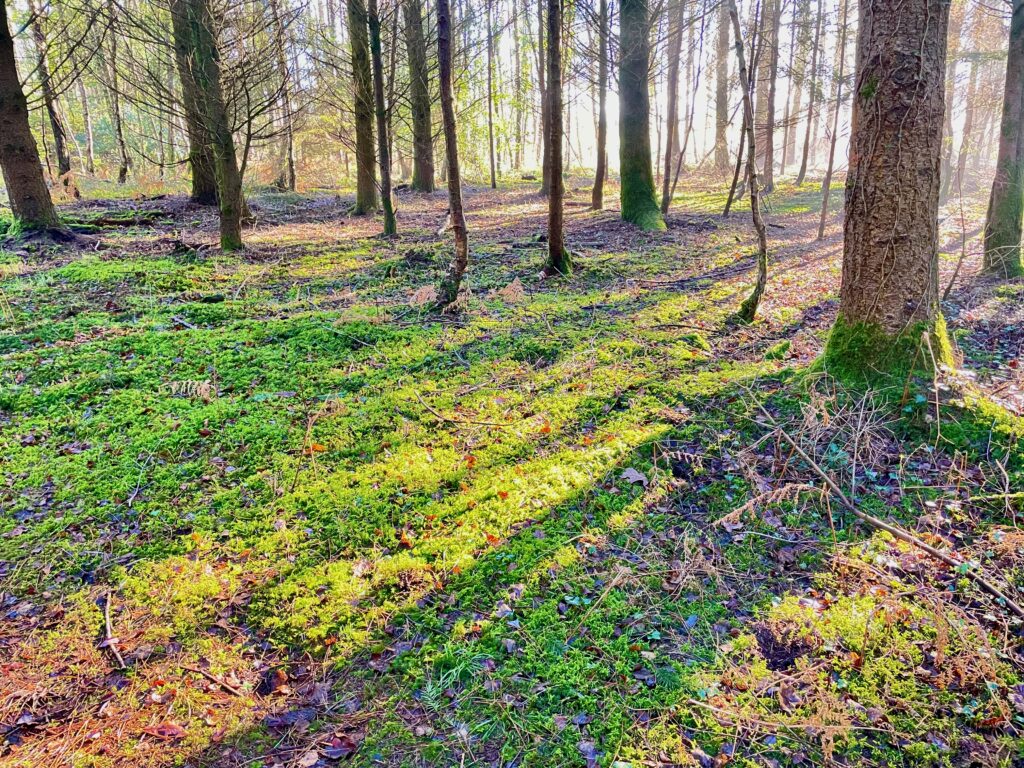
Hearing
Stand perfectly still and listen to the sounds. Hopefully, you will hear more than just ‘human made’ noise such as traffic or aeroplanes overhead. Try to hear the rustle of the leaves or branches in the canopy above, thanks to the wind. This is called the ‘psithurism’ (now an obsolete word) and to me, it’s one of the most beautiful sounds in the world.
Listen for bird song too. Did you know that most birds chirp between 2,500 and 3,500 hertz? This is right in the middle range of human hearing and it is why it can seem like music to us.
Release your inhibition and cup your hands behind your ears and gently push your ears forward – notice how the sounds change. Perhaps explore some other little changes, such as covering one or both ears or tilting your head in different directions. The more you ‘tune in’ the more you will hear, and the more you hear, the happier you will feel.
Touch
Whilst you may enjoy walking or even running through the forest, when did you last slow down to a dawdle? When did you last touch the bark of a tree, scrunch up some fallen leaves, or notice the breeze on your skin? And when was the last time you slipped off your shoes and socks and walked barefoot anywhere outside?
If it is safe to do so, be brave and remove any footwear and allow the soles of your feet to touch the ground beneath you. It’s truly beneficial – research from 2015 showed that “grounding” or “earthing”—direct skin contact with the surface of the earth—can help balance the body’s inflammatory responses and reduce pain.
Notice if the ground is warm or hot, damp or dry, smooth or uneven. Simply notice.
If you are lucky perhaps there is a breeze blowing and you can try welcoming it in, observing the sensations of the wind on your bare skin. If this is enjoyable, see if you can do something to increase the pleasure, perhaps turning into the wind so you feel it in your face, or turning away if you prefer.
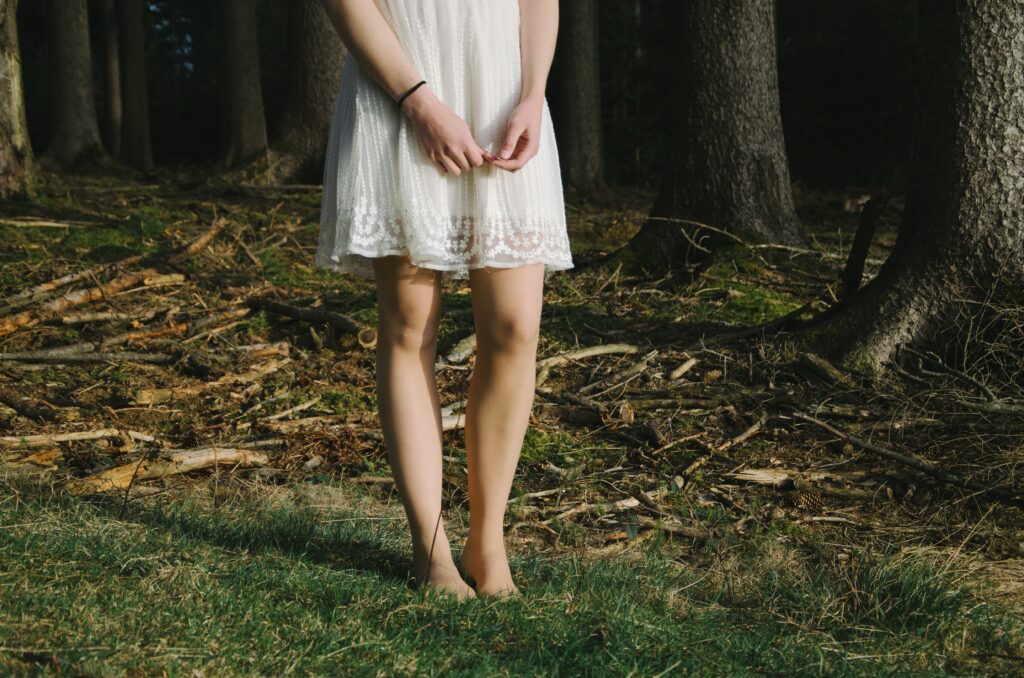
Taste
The fifth and final sense of ‘taste’ is a more difficult one to experience, I admit. You must not eat anything you are not 100% sure to be safe. If you come across fruits, nuts, or seeds that you are very familiar with, then ok, however it’s best to rinse them first.
In my 3-hour session, we end with tea brewed from foraged ingredients – a wonderful opportunity to ‘take the forest home inside us’. We all smell and taste the tea together, whilst thanking nature for the experience.
If you are certain you can identify pine trees then bite down on a pine needle a few times. However, definitely don’t confuse it with yew which is highly toxic-avoid if unsure. I often enjoy chomping on a few needles as I’m preparing for or guiding a session. The taste is beautifully refreshing and unexpectedly like citrus. Super good for your health too as it’s high in vitamins A and C and antioxidants.
Your Sense of Imagination
Everything in Forest Bathing is designed to be gentle, fun and explorative. As you walk quietly in nature your logical left brain relaxes and your more creative, intuitive right brain comes alive. As a consequence, you will naturally find yourself reconnecting with your childlike sense of curiosity. For example, you might remember how carefree you used to feel when you played outdoors when you were younger.
I go straight back to The Faraway Tree stories when I see ancient oaks! You might notice a nearby squirrel or bird watching you and ponder for a moment about what they’re thinking. Or find yourself considering what’s alive beneath your feet and how you’re being supported by decades and centuries-old earth. Or perhaps you suddenly feel like hugging a tree?
🌿 Related: The Benefits of Tree Hugging
Connecting with nature through your senses quietens the chattering, overactive mind. It’s easier to slow down, be open and enjoy these playful moments that might otherwise seem like a waste of time or foolish. If you only take one thing away from this beginner’s guide to Forest Bathing, let it be to return to your roots and commit to more radical relaxation 🙂
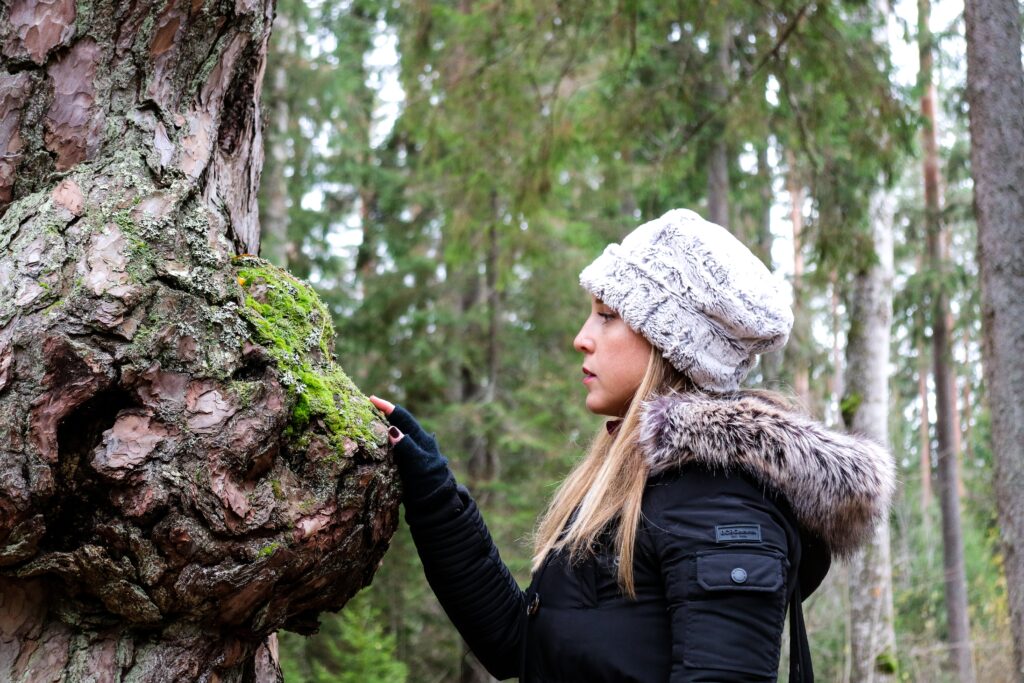
The Vestibular Sense
The vestibular sense is also known as the movement, gravity and/or balance sense and we use it without realising. Therefore, if you find yourself wanted to do some mindful movement while out, this sense supports you in doing that. Breathe deeply as you move gently and slowly. Perhaps start with some twists of the upper body and slow, relaxed movements of the arms.
If you do yoga you might like to do the mountain (Tadasana) or tree (Vrikshasana or Vrksasana) pose and go barefeet if you can. Notice how the experience differs from when you do the poses in class or personal practice indoors.
Whatever you do, take it slowly and gently and only do what feels right.
Now You’ve Read This Beginner’s Guide to Forest Bathing, Are You Ready To Try it Yourself?
Has this beginner’s guide to Forest Bathing piqued your interest? Here are a few options for you:
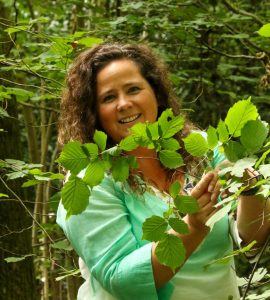
- View this free DIY Forest Bathing Guide take a photo and take it with you on a walk. Focus on your senses as you do the activities and immerse yourself in nature. I’d love to hear how you get on!
- If you’re local to Hampshire, check here to see the schedule and location of general public full and half day events.
- Contact me to discuss a bespoke online or in-person event for your team, friends or hen do, or to find out more about Forest Bathing Guide Training.
- Enjoy a free monthly Vitamin N (Nature) Adventure 😃 designed to get you out in nature and aligned to the wheel of the year
- If you want to learn more about the practice, I have written a series of blog posts on Forest Bathing; what it is, what the benefits are, common myths and misconceptions and what a typical session involves.
I hope to see or hear from you soon.
With warm wishes
Sonya Dibbin
Adore Your Outdoors
